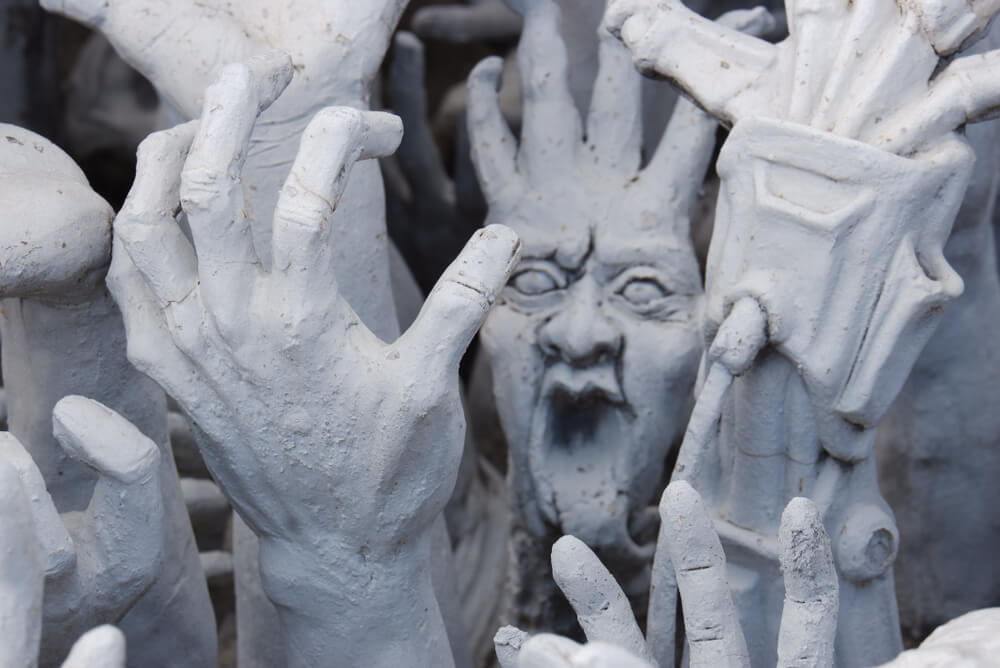Many researchers have tried to delve into the concept of science of the ill-motivated to find out what’s behind misconduct. Neuroscience has been studying what’s in the brains of people who do harm. In addition, many social psychologists have developed experiences with the same hope.
The truth is that we seem to have a real need to know what the wrong people are hiding and how different they are from us. As human beings, we are tirelessly looking at where this difference lies.
- Basically.
- We would like to find something that could give us a clue to avoid the threat they pose or to be able to guarantee that we are different.
- That there’s a physical difference that defines us.
Clues and small structural differences have already been found in the brain, however, we do not yet have an absolute and error-free result, it seems that this problem is not as simple as separating the good from the bad. Perverse beings are revealed more as non-perverse beings, which we would be willing to accept.
Let’s review the possible factors that influence how a person changes or acts badly, there is more than forty years of research on this subject, it seems that we have been able to isolate some of these factors that condemn people to this threatening group.
The type of attachment received during childhood seems to be one of the factors that most influences the way in which evil occurs in an individual. Research on adult personality disorders reveals a high rate of emotional abuse and neglect early in their lives.
Clearly, this fact alone does not make the person bad, however, this seems to be a common denominator for many of them, the development of this idea explains that psychological abuse in childhood is an obstacle to the development of the ability to care for others. However, this would be the most moderate level of all.
However, this fact alone does not explain the evil. In some cases, really bad people were not suspected of having suffered these abuses, so it would not be correct to designate this factor as an absolute predictor.
Some geneticists have found that the MAO-A version may increase the risk of developing a behavioral disorder and may influence repeated episodes of crime in adolescence and adulthood.
This discovery of Avsshlom Caspi also found an interaction of this gene with child abuse. Again, it seems that biology would be conditioned by the environment in which a human being develops.
Another biological factor that seems to have something to do with the science of evil is the level of a prenatal sex steroid hormone: testosterone. The level of this substance to which the baby is exposed during the gestation period seems to influence the development of the human being. brain empathy circuit.
A brilliant criminologist, Julia Shaw, recently published her studies in a book, in which she seeks to address the reason for evil in humans. People.
This seems to be another factor related to what Shaw calls a process of dehumanization and self-justification of harm to others, so, such “anomalies”, combined with a certain degree of paranoia fostered by an anxious culture and a lack of direction, could, together, generate a person willing to harm others.
Likewise, Shaw analyzes what is known in psychology as the “dark triad”: psychopathy, narcissism and Machiavellianism. To the triad he adds one more: sadism. Furthermore, this author makes an extraordinary analysis of the two types of narcissism.
Julia Shaw determines that vulnerable narcissists are far more dangerous than great narcissists; it seems that the former are more prone to anger and hostility; in addition, under the right conditions, they could act in an extremely bad way.
The truth is that by reviewing all the literature that has existed so far, we cannot say that the science of evil has discovered the key factor that determines the formation of a bad person, on the contrary: it seems that evil is developing and that it is environmental factors that end up definitively influencing it.
In this sense, the brilliant experiences of Philip Zimbardo, Stanley Milgram and other researchers of the science of evil have already contextualized how easy it can be for good people to act badly under certain conditions presented by the environment.
This would mean that, in many cases, the factor that separates a good act from a bad act is not the person who committed it, but the circumstances, so that forces us to exercise to understand how we judge people who are doing something. Of course, it’s not about justifying your actions, but the science of evil is complex in recognizing that there are many variables in our actions, and that not all of them are personal.
Apparently, we won’t encounter a “perverse personality disorder. “Therefore, the goal is to create effective ways to prevent this type of behavior. In addition, it is also important to develop a willingness to humanize people who are acting badly, understanding the role that the environment plays.

